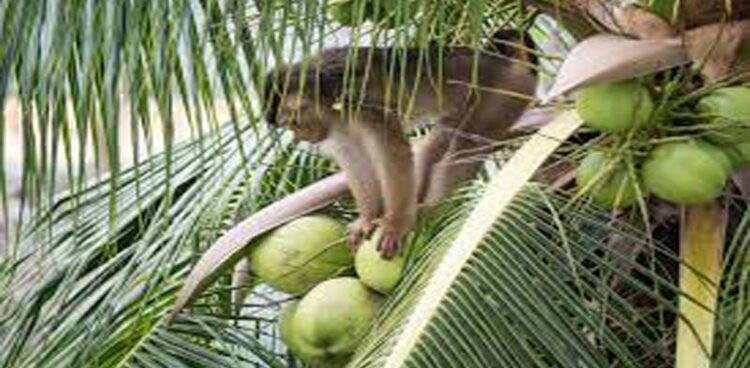Features
Elephants, monkeys and kidneys
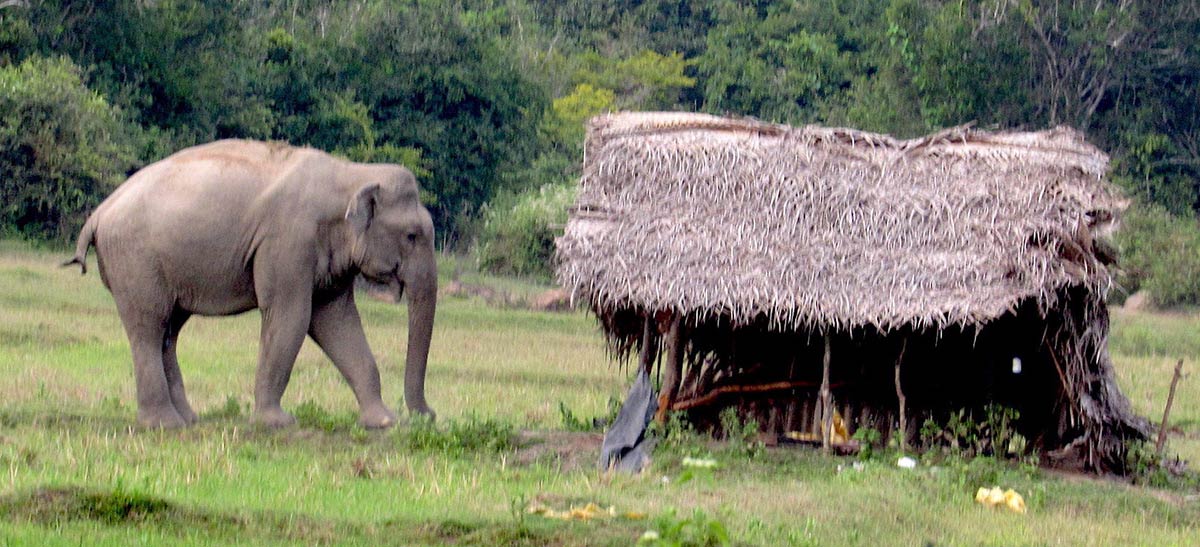
by Dr. Upatissa Pethiyagoda
I have chosen this seemingly peculiar title for the reason that each summarizes the plight of our farmers, unresolved challenges that warrant greater attention of politicians, administrators and researchers. These are real and urgent problems.
All three share the common feature that easy solutions remain elusive and most likely to involve a number of causes and disciplines (multi-factorial) and thus a simple or single solution is unlikely.
Farmers are the most affected by elephant and CKDU (Chronic Kidney Disease of Unknown Aetiology), while the monkey menace troubles urban communities as well. All three are not new, but have come into prominence lately. The economic consequences are very clear. The helplessness of the victims is pathetic.
Unfortunately, the major affliction is upon the poorer segments, of our society. In particular, the plight of farmers in the Dry Zone is harrowing, and ample media coverage is enough to stir our collective conscience. The poor farmers in the drier zones are reeling, already suffering under the ill-effects of the “Vasa visa” caper.
They are desperate, being unable to even pay their dues on bank loans. They are justifiably bitter, seeing no future for themselves or their children. The fact that the NPP, with several important persons with power and a better understanding of poverty and with sympathy and empathy with the poor and the rural sector, may be more willing to offer some much delayed relief is a plus.
These desperate farmers direct their anger mainly at the Wildlife officials, whose plight is also pitiable. They themselves can do little to comfort the rightfully agitated farmers, whose livelihoods and all too often their lives, and those of their children are in peril.
The “Elephant problem”
So much has been written about the Elephant/human conflict that, I have no appetite to be drawn into flogging a dead horse, but focus instead on possible remedies. The size of the ever- increasing dimension/s of the problem is (virtually daily), deservedly dramatized by the media. The expressions on the faces of the victims in the video clips clearly shows their desperation.
The fundamental realization should be that we are the intruders into elephant territory, and not the other way round. Experts hold that elephants have moved along traditional “corridors,” in search of food and water. It is we who are the (thoughtless) intruders into their traditional habitats. For starters, it should really be the “Elephant/Human Conflict” and not the other way round.
Without any expertise or information whatsoever, my wild (and bold) vision is that the ideal situation for the Dry Zone, would be a “Strip- mosaic” system, where farmed (and settled) land would alternate with forest, on a rotation of forest and farm, on a “Cyclic” basis. The widths (ranging say, between about 500 to 1,000 meters), depending on the site and terrain. This might even mimic the current practices of shifting (Chena) cultivation, while also keeping the elephant in a less aggressive and destructive mode.
I can sense the howl that might arise that the commitments of settlement (covering the early Colonization Schemes and later the Mahaweli), have already been done and (irrevocable) and to suggest any changes now would be lunatic and (impracticable). The cycle may be about 25 years or so, allowing the forest to grow sufficiently to be a suitable size for timber. Where practicable, site dimensions to suit preservation of traditional migratory elephant tracks should be taken to account.
This might even mean re-locations of settlements (and laws/rules). I am mindful that even this might be an option, however inconvenient it my be, if we are to save the lives of elephants may be as many as (200 + per year currently, and rising) and of course a like number of humans (sadly, many of them being school children)
`Such tragic figures may be high enough, to make the operations look decidedly justified. The alternating intervals may be revised to longer periods than the 25 years as tentatively suggested above. The task of operating such a change need not be impossible and would necessitate a virtual replication of new settlements. A virtual de-colonizing. Difficult, but can do.
Of course, knotty management problems will arise and demand resolution. The obvious issue would be the cost of changed housing. But it might still be feasible with a longer cycle, above the 25 years.
It may sound ridiculous to suggest that in the absence of any ready solution, despite the considerable and sustained efforts of indisputably competent scientists, environmentalists, doctors, and other relevant specialists, we are far from anything like a viable and practical solution, except that many issues and factors are involved. Any solution would also need to be economically adequate and feasible. When faced with such a vital and intractable problem, all options need to be considered, even though some may seem crazy. (This applies in the case of the CKDU problem as well).
In both, the very lives of hapless farmer-settlers are at stake, and this alone should readily attract assistance, from UN bodies (FAO, WHO, UNICEF and others), Multi National Bodies (such as SAARC, European Union and others) and our own diaspora abroad. The superb personal image adds to the astonishing eloquence and sincerity of President AKD, will melt many hearts for sure. He is best suited to personally spearhead such a drive to win tangible support.
Sam Popham
At this point, I cannot help but include a reference to something, which I found absolutely entrancing. Sam Popham, was a tea estate superintendent, who had developed some unconventional ideas about forestry, soil fertility and land restoration. He was keen to test his ideas, on the ground. To this end, he used his entire gratuity payments to purchase some 18 acres of “clapped out” Dry Zone scrub, to put his ideas to test.
His basic was that nature is the better forester that no human effort can surpass. Thus was established the classic “Popham Arboretum”, All he did was to help the seedlings of the naturally established trees to grow, No fertilizer or even irrigation was allowed. All weeds, especially those capable of choking the growing seedlings, were eliminated. This was the single costliest labour operation. The hazard of bush fires was met by providing fire-gaps. Damage by animals, for cattle, it was by barbed wire fencing. Humans were also by limited access for a very small number of selected guests. This “Suddha Hermit” was seen as a quaint white freak, with strange ways. The locals were led in their sullen hostility by the high priest of the local temple.
Such was the transformation (enlightenment), that the priest even reserved a plot in the temple premises, to inter the ashes or body of his friend upon his death. He must have been depressed when the much alive Popham left for England.
Popham held a Master of in Arts from Cambridge. This was reflected In an elegantly phrased little booklet, titled “DAMBULLA-a sanctuary of tropical trees” in which he describes the philosophy, history and experience in this unique exercise. Some sections where satinwood had established, the appearance was a far cry from the untidy typical Dry Zone scrub, and could easily pass as a meadow in the Temperate Zone.
In a tribute to one of its steadfast patrons, his favoured waterhole in Dambulla town, the bar is named the “Sam. Popham Bar,” adorned with hanging photographs and memorabilia of this extraordinary character, who virtually turned on its head, the sanctified, current forestry practices. “Nature”, he would say “is a better forester than humans could ever be.”
Options for managing the “elephant/human conflict”
Even the most superficial and cursory glance at wild life photographs of herds in Africa and to a lesser extent in Sri Lanka, show that elephant herds are massive. An adult elephant would consume up to about 125 kilograms of fresh leaves, and many gallons of water per day. This vastly exceeds the capacity of most scrubby dry environments to provide. Fortunately, elephants are not choosy and will eat any foliage and tender twigs that are within their reach. However they would be attracted by the ample greenery available in farmers’ fields of paddy, and upland crops such as banana, maize and young coconut trees. They may also be attracted by the likely availability of their precious dietary requirement sf salt and hence the pitiful devastation of their houses suffered by poor farmer families.
In African countries elephants are often smaller in stature than the Asian. They are not amenable to domestication. A Sri Lankan family residing in Botswana was engaged in trying to do so.
Unlike the Asian elephant, where tuskers are very rare, the African tusker is common, with nearly all males having tusks (?). This may drive a willingness to participate, in the culling operation. In Sri Lanka, the elephant is nearly venerated, mainly because the Tooth Relic Casket is carried by a tusker, carefully selected according to some stringent physical traits that mark it as special, and noble enough to qualify for this very special position. In fact the Sinhala idiom recognizes this exalted position in the popular “Elephants are of two types, ones which hauls logs, while the others walk in the Perahera.”
Thus, “culling” as a means of population management, is simply out of the question. For instance, when an elephant is the victim of a train accident, or falls into an unprotected well, the crowd of villagers who come to see the victims, are clearly emotionally overcome. So, even the slightest suggestion of killing this “noble” marauder, would be heresy. .Other measures have to be found.
Deep trenches and electric fences
Both of these, especially the latter, have predictably failed. It is an insult to elephants to not quickly see that fence posts can easily be knocked over, or stepped over by a log or branch cast across the flimsy wiring. Constructing and maintaining miles of electric fencing is so prohibitive that one is tempted to assume that a lucrative trade awaits the suppliers of materials and labour that may be shared by a compliant officer. It is a puzzle why such a patently hopeless, costly and difficult to check method is still promoted. The poor victims have probably been coerced to believe that the massive outlay has the slightest hope of success.
Relocation
From time to time, attempts have been made to re-locate troublesome elephants to ‘safe locations’ in the vicinity. Elephantine cunning, directs them back to their accustomed place in record time.
Defence crops
It is a popular belief that elephants shy away from chilli plants. Barriers of chilli beds, usually combined with trenching can deter marauders.
A tradition among paddy farmers is to set aside an unharvested section of the holding for birds (s. Kurulu Paaluwa) There could be a modification of this by a co-operative planting of rejected or surplus planting material (eg. manioc sticks, banana suckers etc) planted specifically for elephants, with raw material and labour contributed by the farmers themselves. Such self-help projects have been successfully accomplished by programs like the “Gammedda” projects, financed and assisted by the private sector. One can only hope that such could succeed. But the likelihood of success is most remote. No harm in trying it out. There may be hopes of the impossible becoming the possible,
Weaponized honey bees
An innovative method appears to have met with some success among Thai paddy farmers. It is a cunning innovation based on several sound assumptions. The basic assembly consists of a widely spaced (about 50 feet apart) concrete pillars, each topped by a beehive with a functioning colony of bees, the concrete pillars are then connected to their neighbours on each side by sturdy ropes. If an elephant attempts to enter the enclosed area (or farm) they would cause the rope to be shaken, and with it, the two connect bee hives. The irate bees then swarm towards the unsuspecting intruder. Elephants feed through their trunks, which have a sensitive lining. The rudely displaced bees enter the trunk – and all hell breaks loose. The legendary memory of the intruder (elephants never forget) comes into play (once burnt, twice shy) and cunning humans have outwitted the intruders.
Since none of these options is unlikely to offer a “stand alone” solution, it may be wise to consider a multifaceted approach, ideally combining two or more that could provide an additive or synergistic effect.
Monkeys
Monkeys and their cousins ( Rilawas/Macaques and Wanduras ) have always been with us, but have drawn more attention recently apparently by an increase in fecundity. Along with rapid urbanization, their numbers have increased markedly. Monkeys have been known for their mischief. They indulge in stealing things off the table and kitchen and leaving behind a right royal mess. Destructive actions such as dislodging of roofing tiles are intolerable.
More seriously, along with flying squirrels, and polecats they cause huge losses on coconut plantations. A recent pronouncement virtually granted growers freedom to use whatever means (including shooting) of such intruding pests. Widespread protests led to withdrawal of this, as also a proposal to export monkeys to an East Asian country, on suspicion that they would face slaughter for meat.
The current thought of relocating them on an uninhabited island, of which Sri Lanka has right of ownership, will not come o fruition or would have to remain inoperative, because such animals would have no food or drinking water and so die, a painful and slow death. No organization concerned with animal welfare would condone this and on ethical and moral grounds, such a project will encounter stiff resistance.
Kidney disease (CKDU)
This is possibly the largest researched medical problem in our country, but with no finality. Distressingly large numbers of new cases, continue to rise in the most severely affected areas. Numerous meetings, workshops, conferences and seminars, (including one convened in Colombo by FAO) have been conducted. Although providing much data, none has been able to identify conclusive evidence of a single cause. While it would be reasonable to suggest (or suspect) a water-related condition, definite proof is lacking.
What the data does show, is that the condition is not confined to the NCP Dry Zone, Well water (especially when it is turbid (s. ‘Kiwul’) is unsafe, while irrigation (tank) water is safe. Fluoride is partially suspect, but not Arsenic, Aluminum, weed-killer or fertilizer leachate, were not. Gender-wise men were marginally more prone Nelum-ala, Tilapia and other lake fish and Kasippu were not implicated.
Since the condition is fatal, dialysis is the preferred option against kidney implants. There are insufficient dialysis units and hospital space to accommodate the increasing numbers of patients.
As the condition seems to be related to impurities in drinking water, the attempted remedy is to provide water cleaned by reverse osmosis. One is a little surprised at this choice, as the operational and maintenance costs are so high and probably beyond reach.
One less prohibitive option would be refined rainwater, collected off roof-tops. There is also a method developed in Sudan (and Egypt) to clarify Nile water by a simple method using powdered Murunga seeds. I have detailed this in several of my letters and article in which I offered to help anyone who would have access to the simple facilities required. Despite my willingness expressed, along with my contact address, there was not a single taker. The methodology is so well documented, that it would be unforgivable cheek on my part to doubt that this enormously useful and doable method has not been considered and duly tried and fairly tested. It should not be brushed off lightly.
Features
US foreign policy-making enters critical phase as fascist threat heightens globally
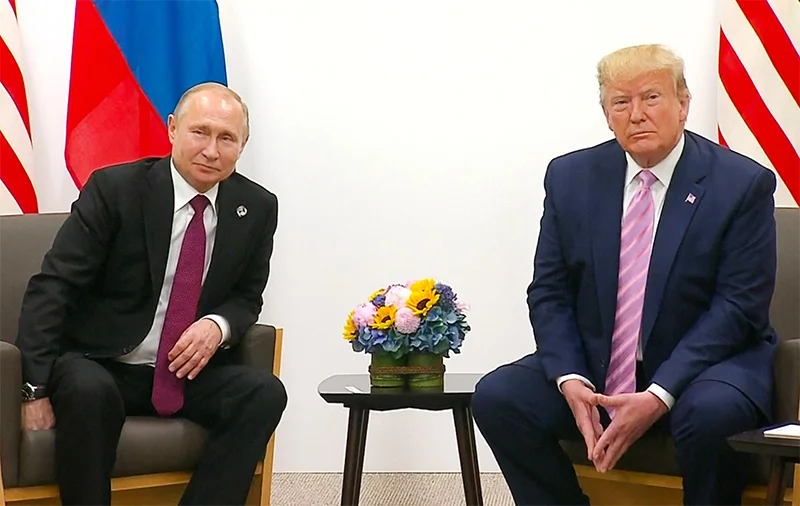
 It could be quite premature to claim that the US has closed ranks completely with the world’s foremost fascist states: Russia, China and North Korea. But there is no denying that the US is breaking with tradition and perceiving commonality of policy orientation with the mentioned authoritarian states of the East rather than with Europe and its major democracies at present.
It could be quite premature to claim that the US has closed ranks completely with the world’s foremost fascist states: Russia, China and North Korea. But there is no denying that the US is breaking with tradition and perceiving commonality of policy orientation with the mentioned authoritarian states of the East rather than with Europe and its major democracies at present.
Increasingly, it is seemingly becoming evident that the common characterization of the US as the ‘world’s mightiest democracy’, could be a gross misnomer. Moreover, the simple fact that the US is refraining from naming Russia as the aggressor in the Russia-Ukraine conflict and its refusal to perceive Ukraine’s sovereignty as having been violated by Russia, proves that US foreign policy is undergoing a substantive overhaul, as it were. In fact, one could not be faulted, given this backdrop, for seeing the US under President Donald Trump as compromising its democratic credentials very substantially.
Yet, it could be far too early to state that in the traditional East-West polarity in world politics, that the US is now squarely and conclusively with the Eastern camp that comprises in the main, China and Russia. At present, the US is adopting an arguably more nuanced approach to foreign policy formulation and the most recent UN Security Council resolution on Ukraine bears this out to a degree. For instance, the UN resolution in question reportedly ‘calls for a rapid end to the war without naming Russia as the aggressor.’
That is, the onus is being placed on only Ukraine to facilitate an end to the war, whereas Russia too has an obligation to do likewise. But it is plain that the US is reflecting an eagerness in such pronouncements to see an end to the Ukraine conflict. It is clearly not for a prolongation of the wasting war. It could be argued that a negotiated settlement is being given a try, despite current international polarizations.
However, the US could act constructively in the crisis by urging Russia as well to ensure an end to the conflict, now that there is some seemingly friendly rapport between Trump and Putin.
However, more fundamentally, if the US does not see Ukraine’s sovereignty as having been violated by Russia as a result of the latter’s invasion, we are having a situation wherein the fundamental tenets of International Law are going unrecognized by the US. That is, international disorder and lawlessness are being winked at by the US.
It follows that, right now, the US is in cahoots with those powers that are acting autocratically and arbitrarily in international politics rather than with the most democratically vibrant states of the West, although a facile lumping together of the US, Russia and China, is yet not possible.
It is primarily up to the US voting public to take clear cognizance of these developments, draw the necessary inferences and to act on them. Right now, nothing substantive could be done by the US voter to put things right, so to speak, since mid-term US elections are due only next year. But there is ample time for the voting public to put the correct perspective on these fast-breaking developments, internationally and domestically, and to put their vote to good use in upcoming polls and such like democratic exercises. They would be acting in the interest of democracy worldwide by doing so.
More specifically it is up to Donald Trump’s Republican voter base to see the damage that is being done by the present administration to the US’ standing as the ‘world’s mightiest democracy’. They need to bring pressure on Trump and his ‘inner cabinet’ to change course and restore the reputation of their country as the foremost democracy. In the absence of such action it is the US citizenry that would face the consequences of Trump’s policy indiscretions.
Meanwhile, the political Opposition in the US too needs to get its act together, so to speak, and pressure the Trump administration into doing what is needed to get the US back to the relevant policy track. Needless to say, the Democratic Party would need to lead from the front in these efforts.
While, in the foreign policy field the US under President Trump could be said to be acting with a degree of ambivalence and ambiguity currently, in the area of domestic policy it is making it all to plain that it intends to traverse a fascistic course. As has been proved over the past two months, white supremacy is being made the cardinal principle of domestic governance.
Trump has made it clear, for example, that his administration would be close to ethnic chauvinists, such as the controversial Ku Klux Klan, and religious extremists. By unceremoniously rolling back the ‘diversity programs’ that have hitherto helped define the political culture of the US, the Trump administration is making no bones of the fact that ethnic reconciliation would not be among the government’s priorities. The steady undermining of USAID and its main programs worldwide is sufficient proof of this. Thus the basis has been adequately established for the flourishing of fascism and authoritarianism.
Yet, the US currently reflects a complex awareness of foreign policy questions despite having the international community wondering whether it is sealing a permanent alliance with the main powers of the East. For instance, President Trump is currently in conversation on matters in the external relations sphere that are proving vital with the West’s principal leaders. For example, he has spoken to President Emmanuel Macron of France and is due to meet Prime Minister Keir Starmer of the UK.
Obviously, the US is aware that it cannot ‘go it alone’ in resolving currently outstanding issues in external relations, such as the Ukraine question. There is a clear recognition that the latter and many more issues require a collaborative approach.
Besides, the Trump administration realizes that it cannot pose as a ‘first among equals’, given the complexities at ground level. It sees that given the collective strength of the rest of the West that a joint approach to problem solving cannot be avoided. This is particularly so in the case of Ukraine.
The most major powers of the West are no ‘pushovers’ and Germany, under a possibly Christian Democratic Union-led alliance in the future, has indicated as much. It has already implied that it would not be playing second fiddle to the US. Accordingly, the US is likely to steer clear of simplistic thinking in the formulation of foreign policy, going forward.
Features
Clean Sri Lanka – hiccups and remedies
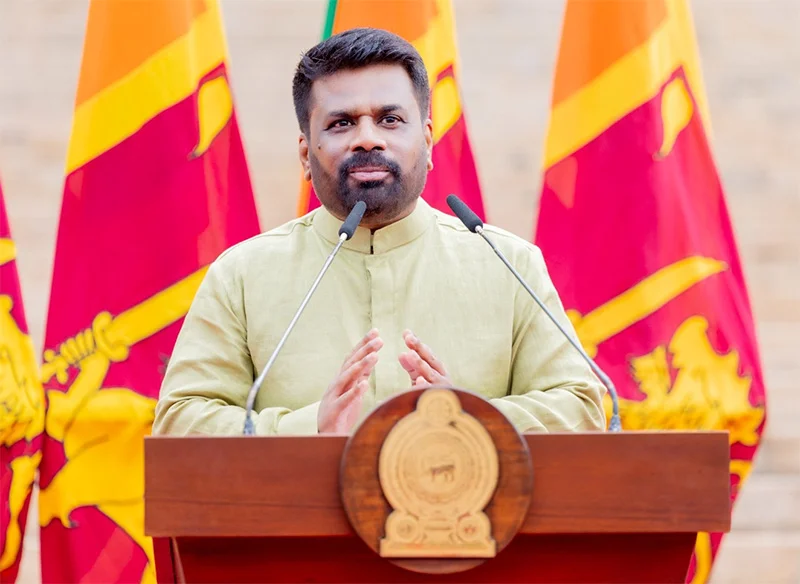
by Upali Gamakumara,
Upali.gamakumara@gmail.com
The Clean Sri Lanka (CSL) is a project for the true renaissance the NPP government launched, the success of which would gain world recognition. It is about more than just cleaning up places. Its broader objectives are to make places attractive and happy for people who visit or use services in the country, focusing more on the services in public institutions and organisations like the SLTB. Unfortunately, these broader objectives are not apparent in its theme, “Clean Sri Lanka,” and therefore there is a misconception that keeping the environment clean is the main focus.
People who realise the said broader objectives are excited about a cleaner Sri Lanka, hoping the President and the government will tackle this, the way they are planning to solve other big problems like the economy and poverty. However, they do not see themselves as part of the solution.
From the management perspective, the CSL has a strategic plan that is not declared in that manner. When looking at the government policies, one can perceive its presence, the vision being “A Prosperous Nation and a Beautiful Life,” the mission “Clean Sri Lanka” and the broader objectives “a disciplined society, effective services, and a cleaner environment.” If the government published these as the strategy, there would have been a better understanding.
Retaining the spirit and expectations and continuing the ‘Clean Sri Lanka’ project is equally important as much as understanding its deep idea. For this, it needs to motivate people, which differs from those motivators that people push to achieve selfish targets. The motivation we need here is to evolve something involuntarily, known as Drivers. Drivers push for the survival of the evolution or development of any entity. We see the absence of apparent Drivers in the CSL project as a weakness that leads to sporadic hiccups and free flow.
Drivers of Evolution
Drivers vary according to the nature of envisaged evolution for progress. However, we suggest that ‘the force that pushes anything to evolve’ would fit all evolutions. Some examples are: ‘Fitting to survival’ was the driver of the evolution of life. Magnetism is a driver for the unprecedented development of physics – young Einstein was driven to enquire about the ‘attraction’ of magnets, eventually making him the greatest scientist of the 20th century.
Leadership is a Driver. It is essential but do not push an evolution continually as they are not sprung within a system involuntarily. This is one of the reasons why CSL has lost the vigour it had at its inception.
CSL is a teamwork. It needs ‘Drives’ for cohesion and to push forward continually, like the Quality Improvement Project of the National Health Service (NHS) in England. Their drivers are outlined differently keeping Aims as their top driver and saying: Aims should be specific and measurable, not merely to “improve” or “reduce,” engage stakeholders to define the aim of the improvement project and a clear aim to identify outcome measures.
So, we think that CSL needs Aims as defined by NHS, built by stakeholder participation to help refine the project for continuous evolution. This approach is similar to Deming’s Cycle for continual improvement. Further, two more important drivers are needed for the CSL project. That is Attitudinal Change and Punishment. We shall discuss these in detail under Psychoactive Environment (pSE) below.
Aside from the above, Competition is another driver in the business world. This helps achieve CSL objectives in the private sector. We can see how this Driver pushes, with the spread of the Supermarket chains, the evolution of small and medium retail shops to supermarket level, and in the private banks and hospitals, achieving broader objectives of CSL; a cleaner environment, disciplined behaviuor, efficient service, and the instillation of ethics.
The readers can now understand the importance of Drivers pushing any project.
Three Types of Entities and Their Drives
We understand, that to do the transformation that CSL expects, we need to identify or adopt the drivers separately to suit the three types of entities we have in the country.
Type I entities are the independent entities that struggle for their existence and force them to adopt drivers involuntarily. They are private sector entities, and their drivers are the commitment of leadership and competition. These drivers spring up involuntarily within the entity.
Type II are the dependent entities. To spring up drivers of these entities commitment of an appointed trustee is a must. Mostly in state-owned entities, categorized as Boards, Authorities, Cooperations, and the like. Their drivers do not spring up within or involuntarily unless the leader initiates. The Government of a country also falls into this type and the emergence of drivers depends on the leader.
Type III entities have neither independent nor dependent immediate leader or trustee. They are mostly the so-called ‘Public’ places like public-toilets, public-playgrounds, and public-beaches. No team can be formed as these places are open to any, like no-man-land. Achieving CSL objectives at these entities depends on the discipline of the public or the users.
Clean Sri Lanka suffers the absence of drivers in the second and third types of entities, as the appointed persons are not trustees but temporary custodians.
The writer proposes a remedy to the last two types of entities based on the theory of pSE explained below.
Psychoactive Environment (pSE) –
The Power of Customer Attraction
Research by the writer introduced the Psychoactive Environment (pSE) concept to explain why some businesses attract more customers than others who provide the same service. Presented at the 5th Global Conference on Business and Economics at Cambridge University in 2006, the study revealed that a “vibe” influences customer attraction. This vibe, termed pSE, depends on Three Distinct Elements, which can either attract or repel customers. A positive pSE makes a business more attractive and welcoming. This concept can help develop Drivers for Type II and III entities.
pSE is not an all-inclusive solution for CSL, but it lays the foundation for building Drivers and motivating entities to keep entrants attractive and contented.
The structure of the pSE
The three distinct Elements are the Occupants, Systems, and Environment responsible for making a pSE attractive to any entity, be it a person, institution, organization, or county. Each of these elements bears three qualities named Captivators. These captivators are, in simple terms, Intelligent, Nice, and Active in their adjective forms.
pSE theorizes that if any element fails to captivate the entrant’s mood by not being Intelligent, Nice, or Active, the pSE becomes negative, repelling the entrant (customer). Conversely, the positive pSE attracts the entrants if the elements are Intelligent, Nice, and Active.
For example, think person who comes to a Government Office for some service. He sees that the employees, service, and environment are intelligent, nice, and active, and he will be delighted and contented. He will not get frustrated or have any deterioration in national productivity.
The Significance of pSE in CSL
The Elements and the Captivators are universal for any entity. Any entity can easily find its path to Evolution or Progress determined by these elements and captivators. The intangible broader objectives can be downsised to manageable targets by pSE. Achievements of these targets make the entrants happy and enhance productivity – the expectation of Clean Sri Lanka (CSL).
From the perspective of pSE, now we can redefine the Clean Sri Lanka project thus:
To make the Elements of every entity in Sri Lanka: intelligent, Nice, and Active.
How Would the pSE be A Remedy for The Sporadic Hiccups?
We have seen two possible reasons for sporadic setbacks and the discontinuity of some projects launched by the CSL. They are:
The absence of involuntary Drivers for evolvement or progress
Poor attitudes and behaviors of people and leaders
Remedy for the Absence of Drivers
Setting up a system to measure customer or beneficiary satisfaction, and setting aims can build Drivers. The East London NHS principles help build the Aims that drive type II & II entities. The system must be designed to ensure continual improvement following the Deming Cycle. This strategy will create Drivers for Type I & II entities.
This process is too long to explain here therefore we refrain from detailing.
Attitudinal Change
The most difficult task is the attitudinal and behavioural change. Yet it cannot be postponed.
Punishment as a strategy
In developed countries, we see that people are much more disciplined than in the developing countries. We in developing countries, give credit to their superior culture, mitigating ours as rudimental. The long experience and looking at this affair from a vantage point, one will understand it is not the absolute truth. Their ruthless wars in the past, rules, and severe punishment are the reasons behind this discipline. For example, anyone who fails to wear a car seatbelt properly will be fined 400 AUD, nearly 80,000 LKR!
The lesson we can learn is, that in Sri Lanka, we need strong laws and strict punishment together with a type of strategic education as follows.
Psychological Approach as a Strategy
The psychological theory of attitude formation can be used successfully if some good programmes can be designed.
All attitude formations start with life experience. Formed wrong or negative attitudes can be reversed or instilled with correct attitudes by exposure to designed life experiences. The programmes have been developed using the concepts of Hoshin Kanri, Brainstorming, Cause-and-Effect analysis, and Teamwork, in addition to London NTS Quality Improvement strategies.
The experience and good responses we received for our pSE programs conducted at several institutions prove and have built confidence in our approach. However, it was a time, when governments or organisations did not pay much attention to cultural change as CSL expects in the country.
Therefore, we believe this is a golden opportunity to take the CSL supported by the pSE concept.
Features
Visually impaired but ready to do it their way
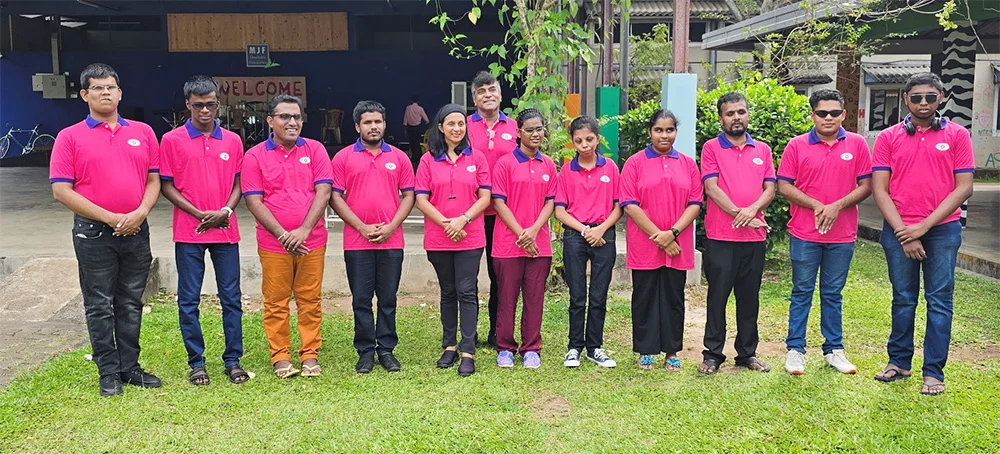
 Although they are visually impaired youngsters, under the guidance of renowned musician Melantha Perera, these talented individuals do shine bright … hence the name Bright Light.
Although they are visually impaired youngsters, under the guidance of renowned musician Melantha Perera, these talented individuals do shine bright … hence the name Bright Light.
Says Melantha: “My primary mission is to nurture their talent and ensure their sustainable growth in music, and I’m thrilled to announce that Bright Light’s first public performance is scheduled for 7th June, 2025. The venue will be the MJF Centre Auditorium in Katubadda, Moratuwa.”
Melantha went on to say that two years of teaching, online, visually impaired youngsters, from various parts of the island, wasn’t an easy ride.
There were many ups and downs but Melantha’s determination has paid off with the forming of Bright Light, and now they are gearing up to go on stage.
According to Melantha, they have come a long way in music.
“For the past few months, we have been meeting, physically, where I guide them to play as a band and now they show a very keen interest as they are getting to the depth of it. They were not exposed to English songs, but I’ve added a few English songs to widen their repertoire.
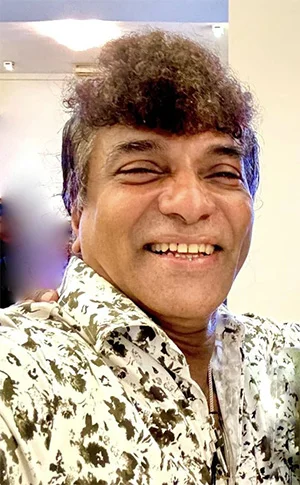
Melantha Perera: Invented a notation
system for the guitar
“On 7th June, we are opening up for the public to come and witness their talents, and I want to take this product island-wide, giving the message that we can do it, and I’m hoping to create a database so there will be a following. Initially, we would like your support by attending the show.”
Melantha says he didn’t know what he was getting into but he had confidence teaching anyone music since he has been in the scene for the past 45 years. He began teaching in 2015,
“When I opened my music school, Riversheen School of Music, the most challenging part of teaching was correcting tone deaf which is the theoretical term for those who can’t pitch a note, and also teaching students to keep timing while they sang and played.”
Melantha has even invented a notation system for the guitar which he has named ‘MelaNota’. He has received copyrights from the USA and ISO from Australia, but is yet to be recognised in Sri Lanka.
During Covid-19, Melantha showcased MelaNota online and then it was officially launched with the late Desmond De Silva playing one of his tunes, using MelaNota.
Melantha says that anyone, including the visually impaired, can play a simple melody on a guitar, within five minutes, using his notation system.
“I’ve completed the system and I’m now finalising the syllabus for the notation system.”
Melantha has written not only for the guitar, but also for drums, keyboards, and wind instruments.
For any queries, or additional information, you could contact Melantha at 071 454 4092 or via email at thebandbrightlight@gmail.com.
-

 Business4 days ago
Business4 days agoSri Lanka’s 1st Culinary Studio opened by The Hungryislander
-

 Sports5 days ago
Sports5 days agoHow Sri Lanka fumbled their Champions Trophy spot
-

 News7 days ago
News7 days agoKiller made three overseas calls while fleeing
-

 News6 days ago
News6 days agoSC notices Power Minister and several others over FR petition alleging govt. set to incur loss exceeding Rs 3bn due to irregular tender
-

 Features5 days ago
Features5 days agoThe Murder of a Journalist
-
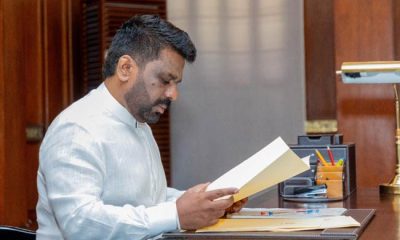
 Features5 days ago
Features5 days agoExcellent Budget by AKD, NPP Inexperience is the Government’s Enemy
-
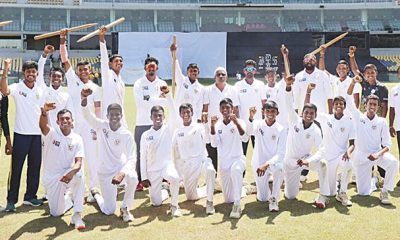
 Sports5 days ago
Sports5 days agoMahinda earn long awaited Tier ‘A’ promotion
-

 News6 days ago
News6 days agoMobile number portability to be introduced in June

